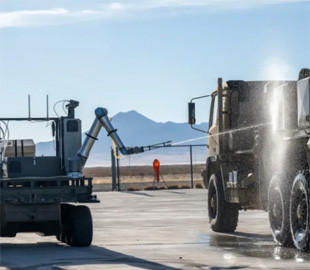
US Army personnel successfully demonstrated the use of an unmanned ground vehicle to decontaminate military property during recent tests of the “Desert Phantom” at the Dugway training ground.
The test highlighted the growing role of robotics in minimizing the risks of exposure to soldiers in dangerous environments.
The training included a demonstration of the U.S. Army Combat Capabilities Development Command's Chemical and Biological Center's autonomous equipment decontamination system. This robotic solution effectively washed chemical simulant from the vehicle's surface, eliminating the need for soldiers to come into direct contact with potentially hazardous substances. The technology allows personnel to remain at a safe distance during decontamination operations, reducing the risks associated with exposure to hazardous chemicals.
200% Deposit Bonus up to €3,000 180% First Deposit Bonus up to $20,000The system includes a camera mounted on an unmanned ground vehicle that is programmed to rotate around the target vehicle, scanning its entire surface. The collected data is transmitted in real time to system operators located in a secure rear area, who then initiate the decontamination process. A robotic arm uses the data to spray a decontamination mixture developed by DEVCOM CBC directly onto contaminated areas, ensuring accuracy and efficiency.
The process demonstrated during the Desert Phantom test not only demonstrated the ability of this autonomous system to perform effective decontamination, but also highlighted its effectiveness in conserving decontamination resources. By targeting only the hot spots identified by the scanning system, the autonomous equipment decontamination system saves time and valuable chemical decontamination agents.
The deployment of such autonomous systems is part of a broader effort by the U.S. Army to protect soldiers from direct exposure to harmful agents.

